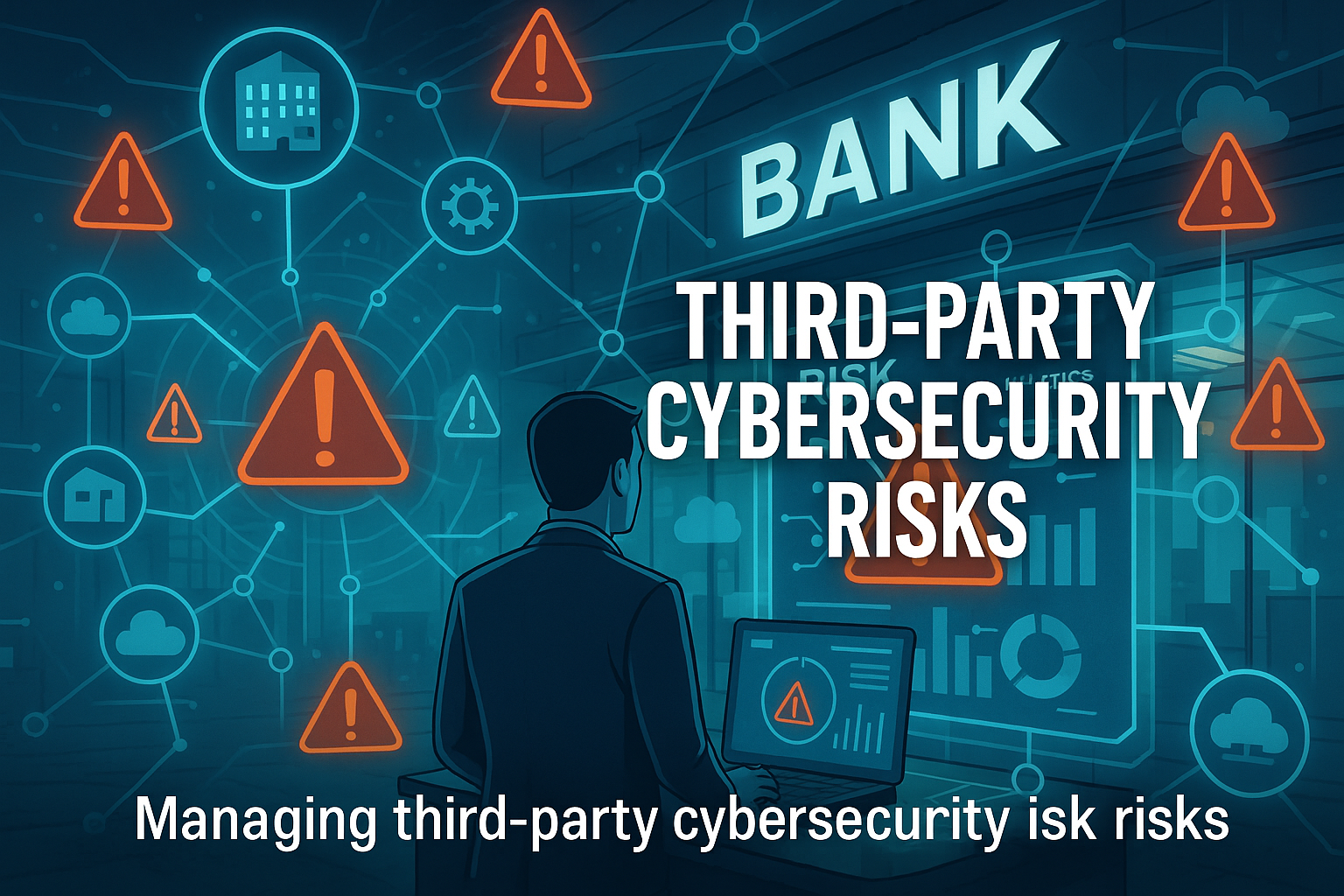As banks increasingly rely on vendors, fintechs, and cloud service providers, third-party risk management in banking has become a critical security and compliance concern in 2025. One misstep in vendor oversight can open the door to ransomware, data breaches, or regulatory penalties—especially as threat actors target weak links in the financial ecosystem.
Why Third-Party Risk Is Growing
In 2025, several trends are compounding third-party cyber risk:
- Digital banking expansion: APIs and open banking partnerships are exposing sensitive systems to more external connections
- Cloud-native transformation: Banks are migrating infrastructure and data to third-party cloud environments
- Increased outsourcing: Core functions like IT support, payment processing, and KYC are commonly handled by vendors
- Regulatory scrutiny: Supervisory bodies now require formal vendor oversight processes, documentation, and scenario testing
Threat actors are exploiting these dynamics with targeted supply chain attacks. The recent LockBit ransomware breach at a financial services data aggregator impacted over 40 banks through indirect access—an attack that bypassed each bank’s perimeter controls entirely.
Regulatory Mandates Tighten Oversight
In 2025, updated regulatory frameworks are driving urgency for banks to mature their third-party risk practices:
- The Federal Reserve, OCC, and FDIC finalized interagency guidance on third-party risk management
- The EU’s DORA (Digital Operational Resilience Act) mandates vendor risk assessments, exit strategies, and critical ICT service audits
- State privacy laws (like CCPA 2.0 and CPRA) expand breach notification and data handling responsibilities to vendors
- ESG disclosures under CSRD now require governance of sustainability and cyber risk throughout the supply chain
Institutions that fail to meet these requirements risk fines, lost licenses, or reputational damage.
What Makes Vendor Risk Management So Challenging?
Managing vendor risk isn’t just about contracts. Key challenges include:
- Lack of visibility into vendor security practices or sub-contractors
- Inconsistent due diligence across business units
- Manual risk assessments that are time-consuming and error-prone
- No real-time monitoring of vendor security posture
- Vendor sprawl, with hundreds of relationships across multiple departments
Building a Resilient Third-Party Risk Program
To address these issues, banks should adopt a five-pronged approach:
1. Formalize Vendor Risk Governance
Create a centralized third-party risk policy that defines ownership, risk tiers, and escalation paths.
2. Conduct Tiered Risk Assessments
Classify vendors based on access to sensitive systems or data. Perform deeper due diligence for high-risk partners.
3. Require Continuous Monitoring
Implement tools that track vendors’ cyber hygiene in real time—such as attack surface monitoring and breach alerts.
4. Integrate Compliance Mapping
Use frameworks that align vendor controls with requirements from DORA, GDPR, FFIEC, and SOC 2 to streamline audits.
5. Build Exit and Contingency Plans
Define procedures for disengagement or vendor failure, including data return/destruction and backup providers.
Technology and Partners to the Rescue
Manually tracking dozens—or hundreds—of vendors is unsustainable. Modern banks are adopting:
- Third-party risk management platforms with dashboards, workflow automation, and integrations
- Attack surface management tools to monitor vendor exposures
- Compliance automation software to centralize documentation
- Specialized consulting partners to assess and mature their vendor risk program
At The Saturn Partners, we work with financial institutions to design, implement, and maintain scalable third-party cyber risk programs. Whether you need help with SOC 2 reviews, vendor questionnaires, or automated risk scoring, we’ve got you covered.
Final Thoughts
Third-party risk management in banking is no longer a check-the-box activity. It’s a critical pillar of your 2025 cybersecurity and compliance strategy. By formalizing your program and leveraging the right tools and partners, your institution can stay resilient—no matter how complex your vendor landscape becomes.
📞 Schedule a risk assessment with The Saturn Partners to identify and remediate hidden vendor vulnerabilities.

